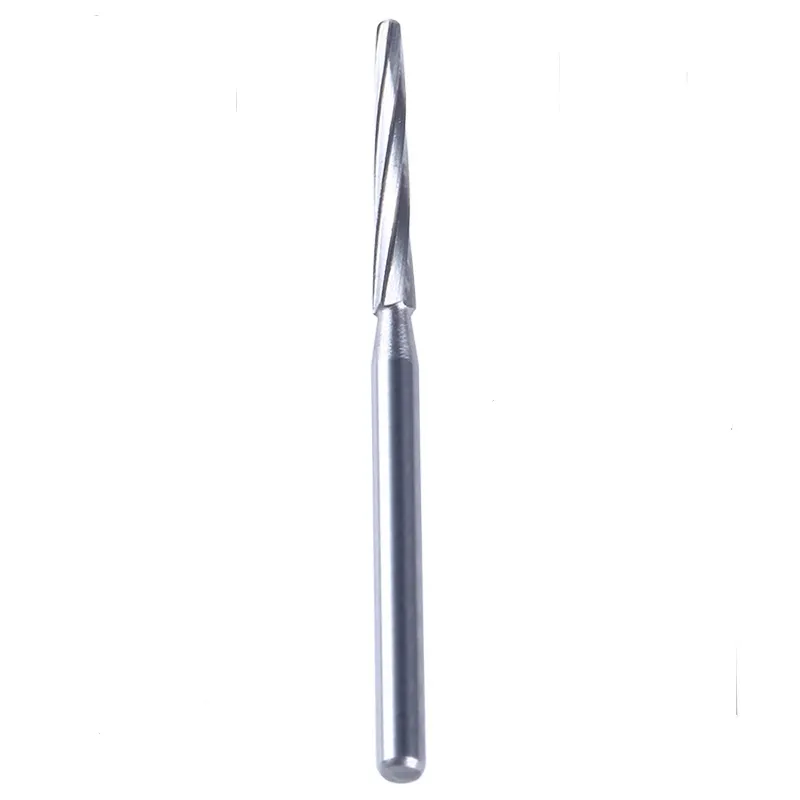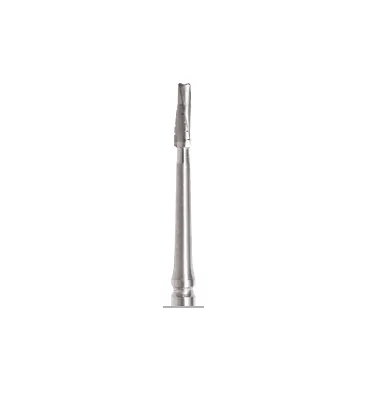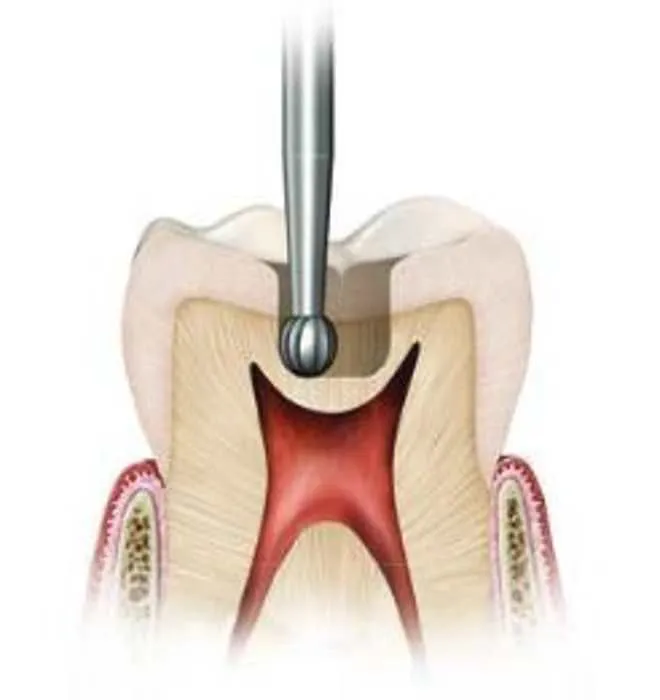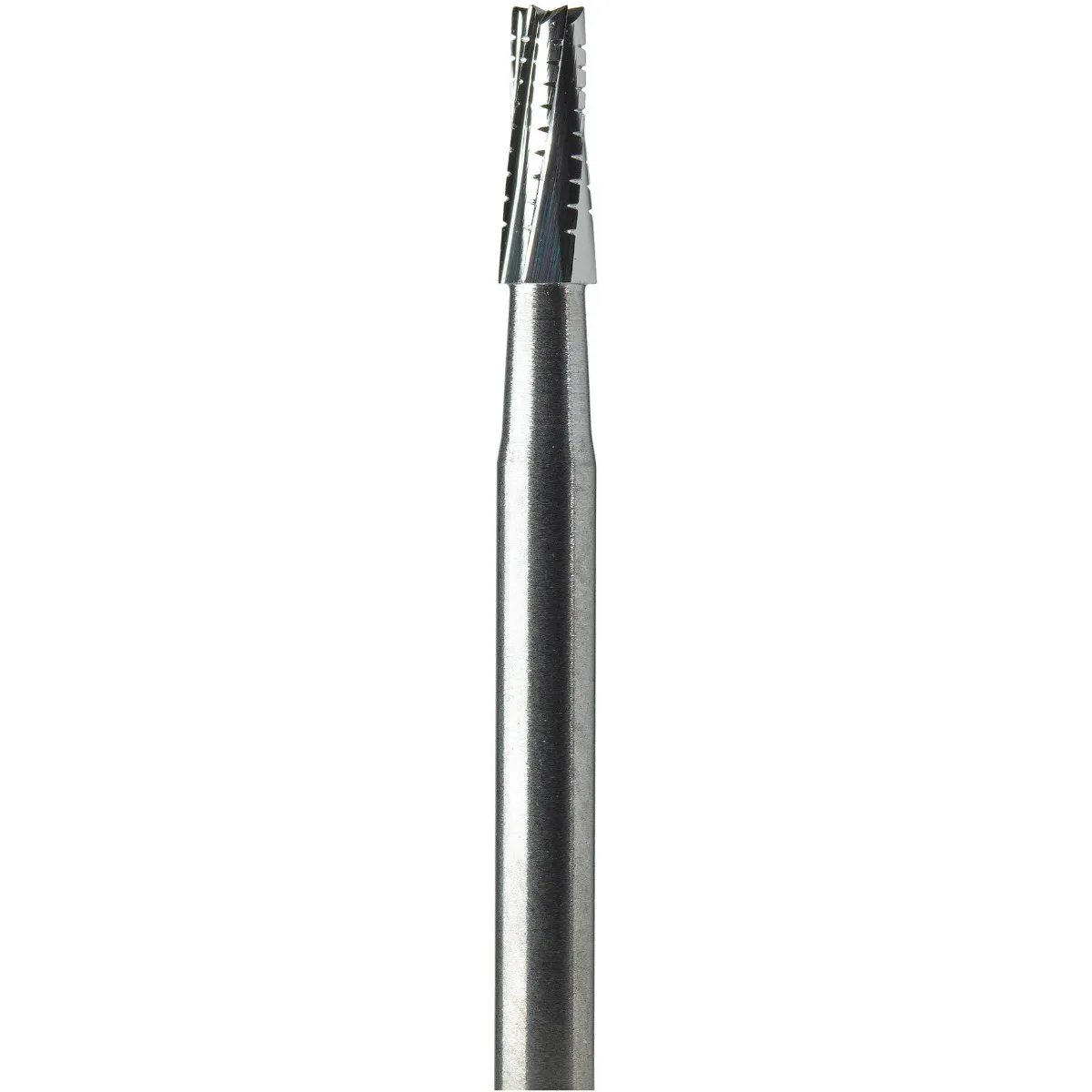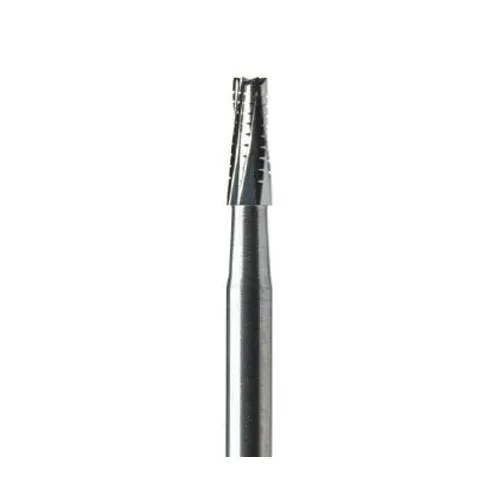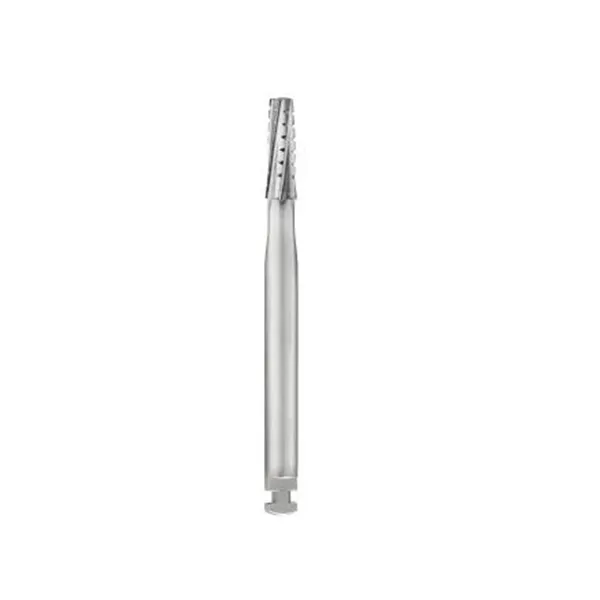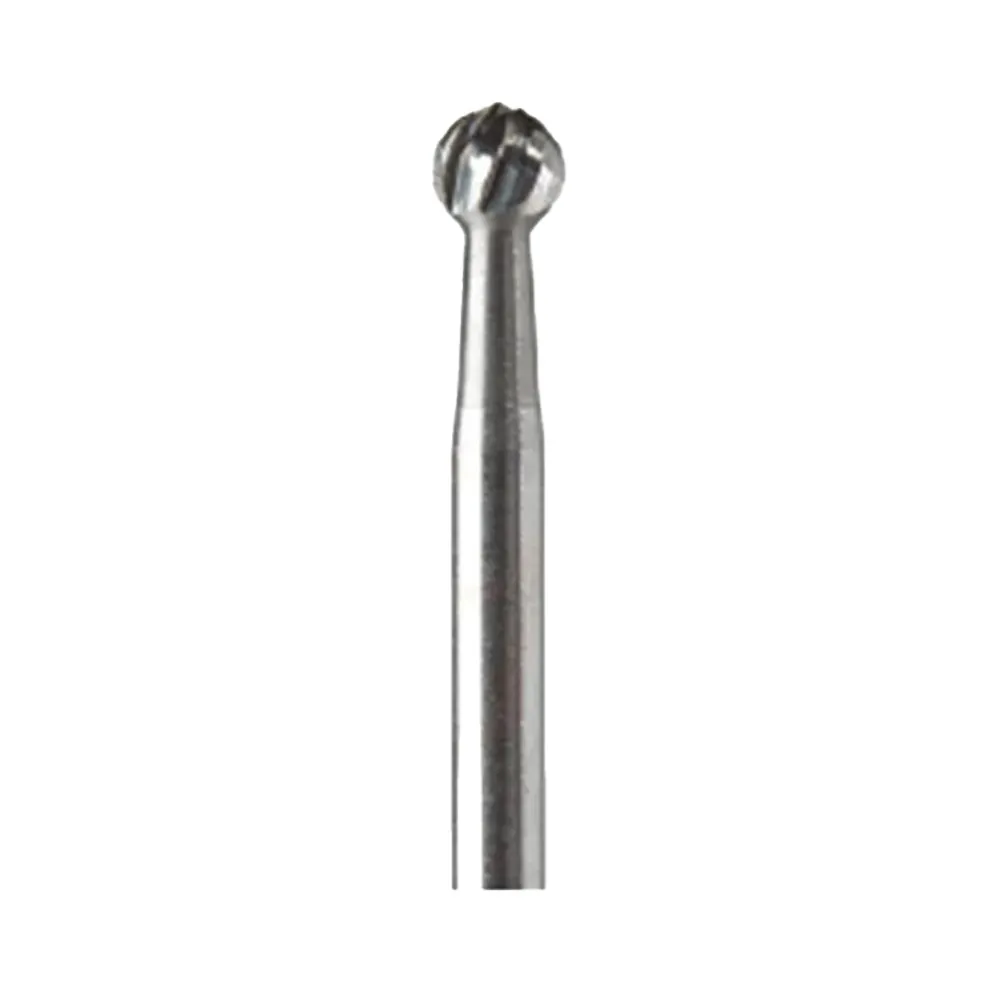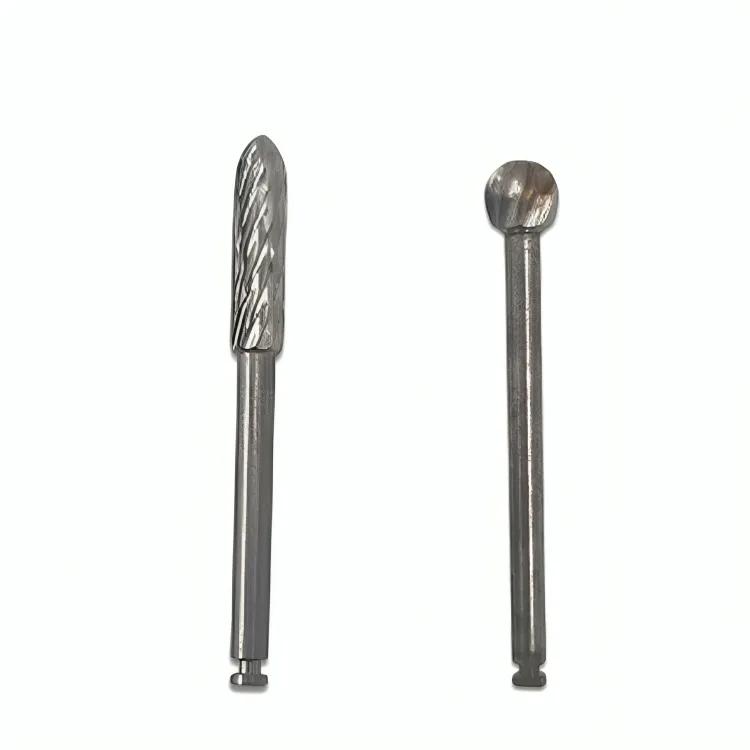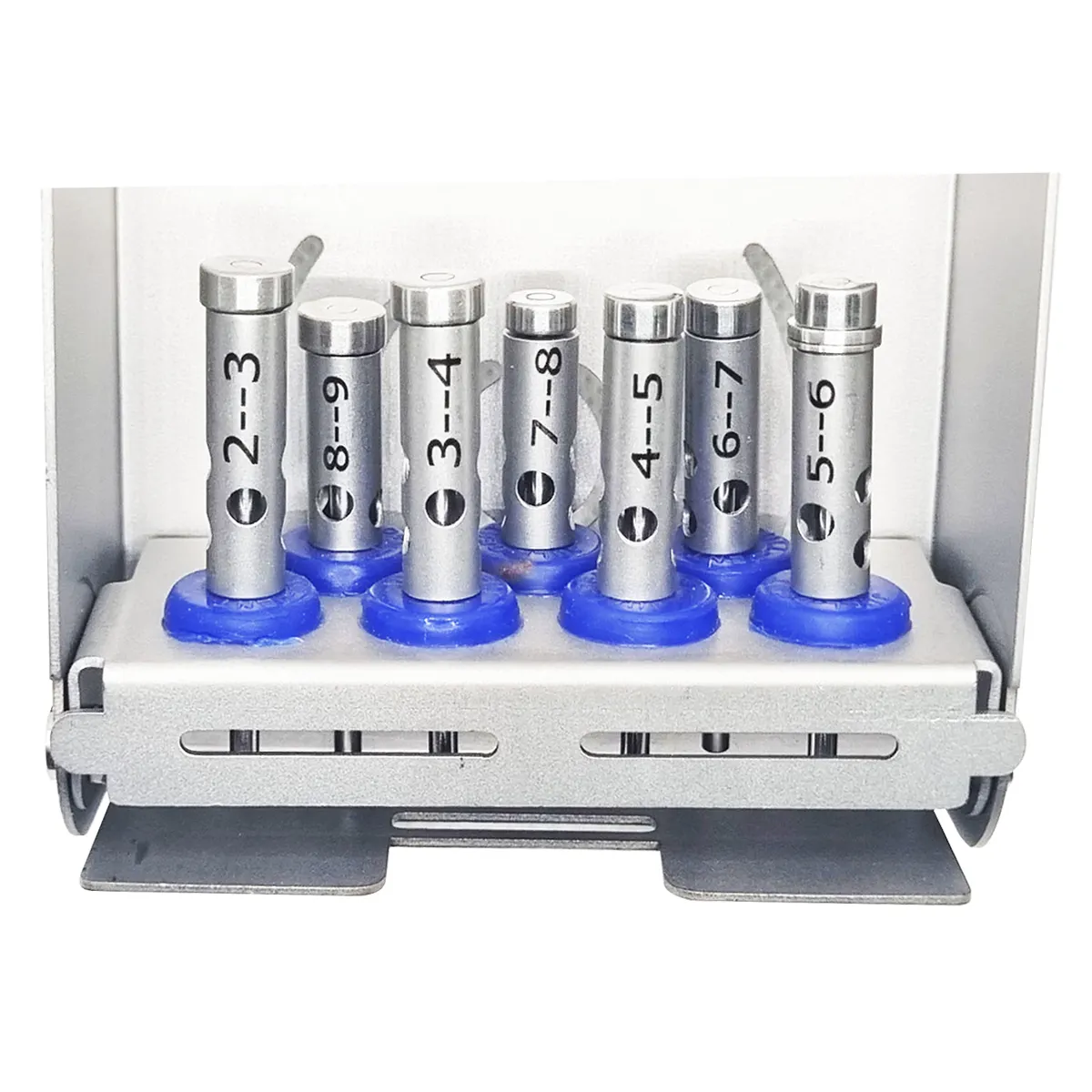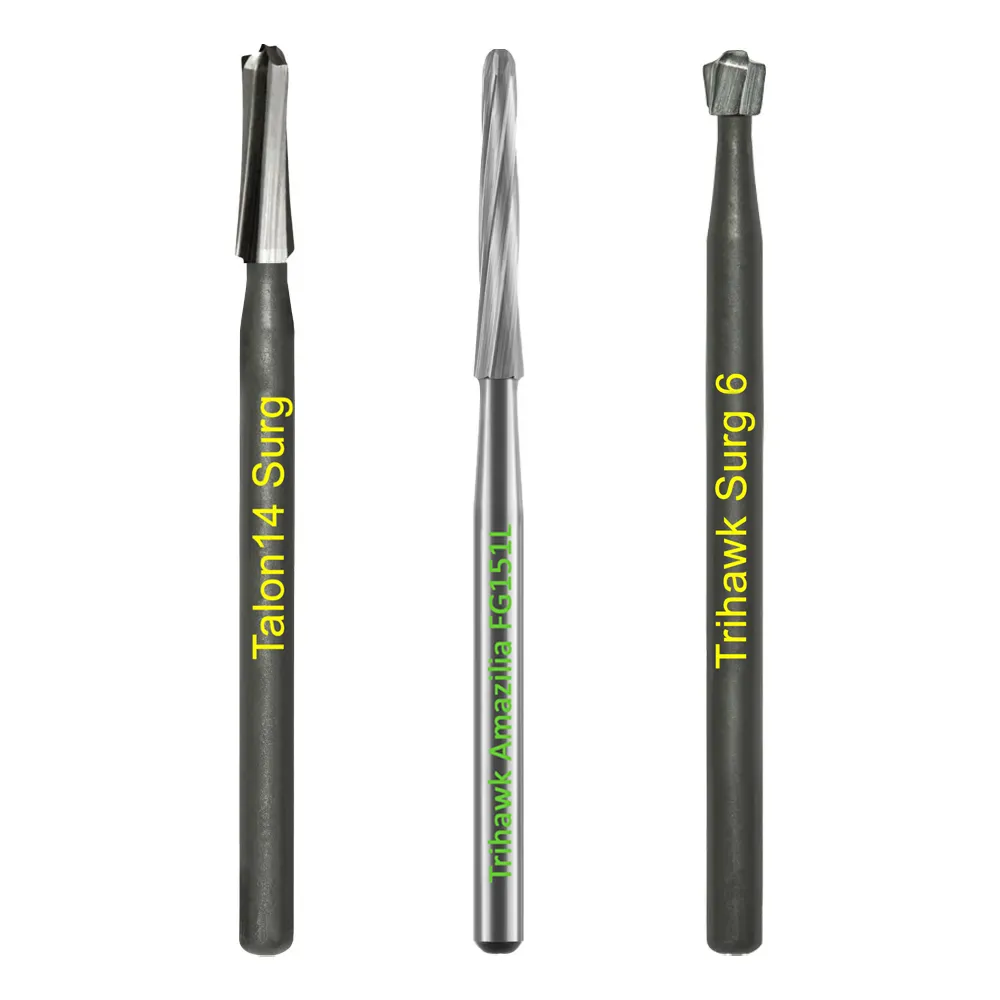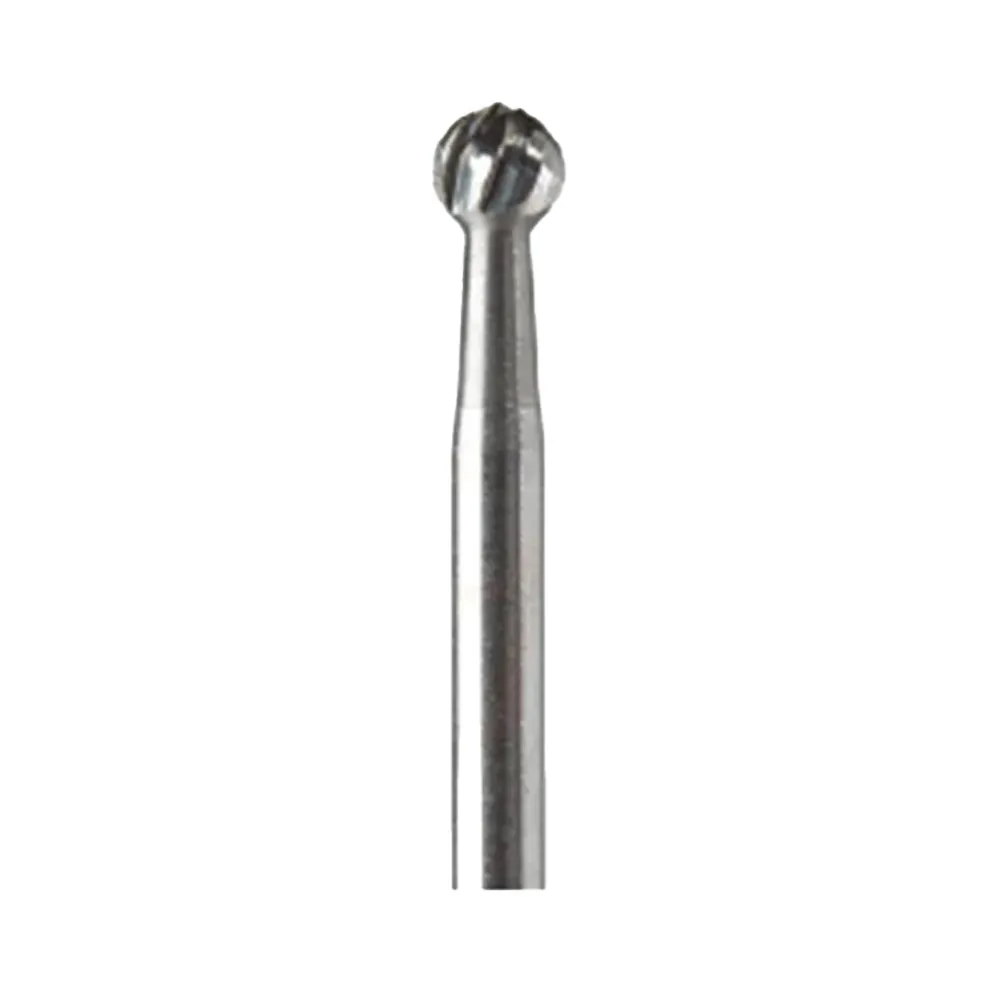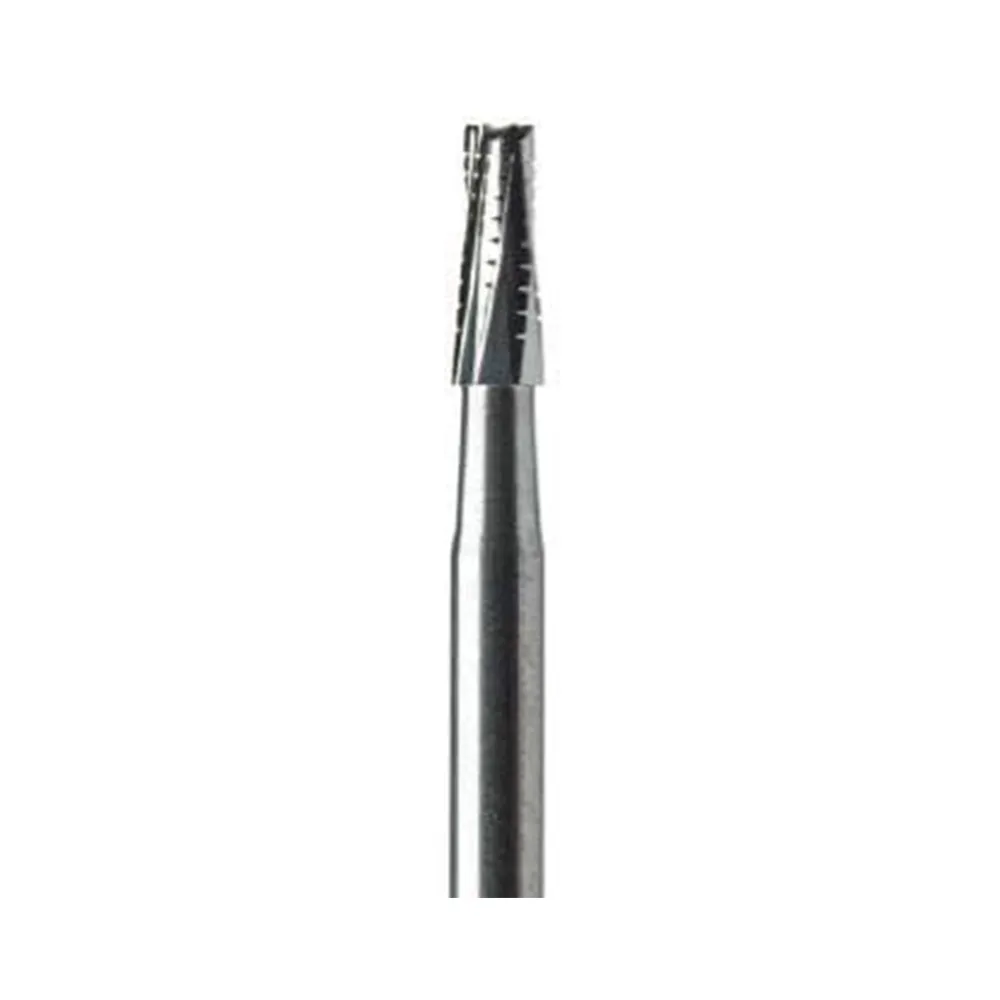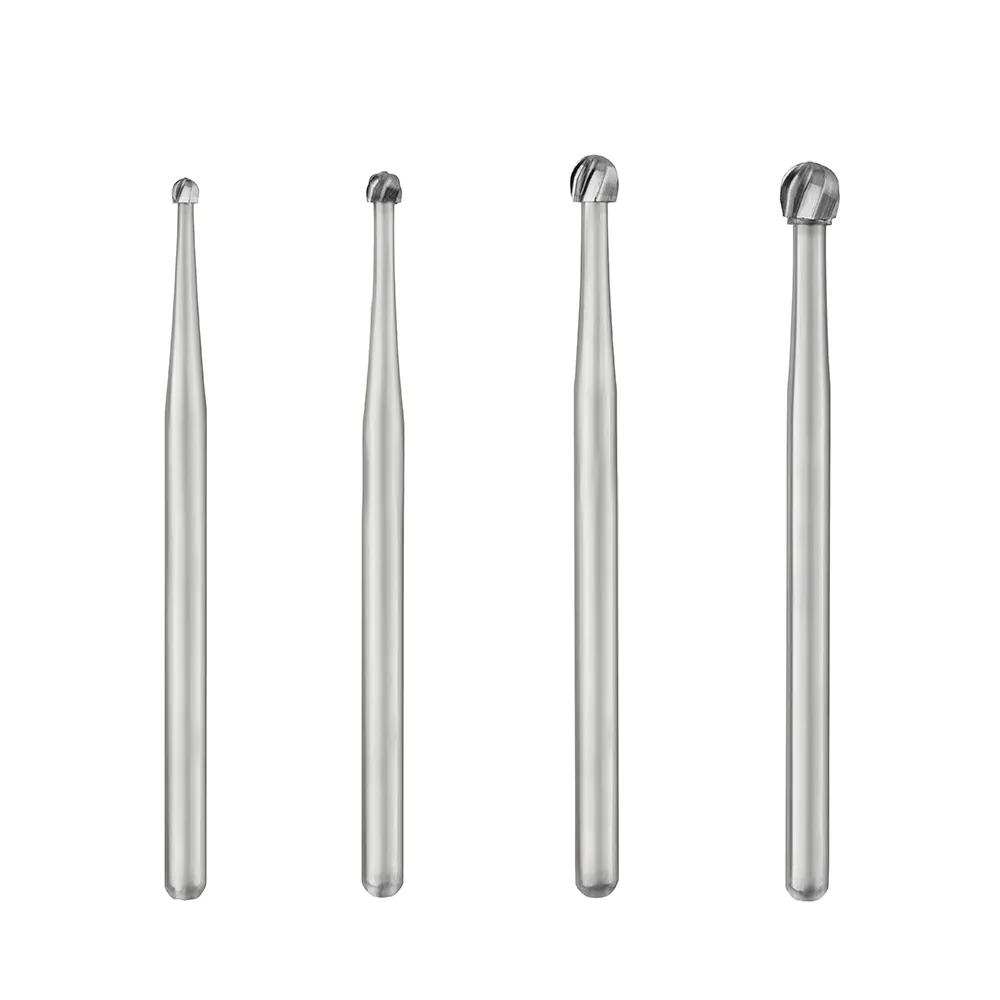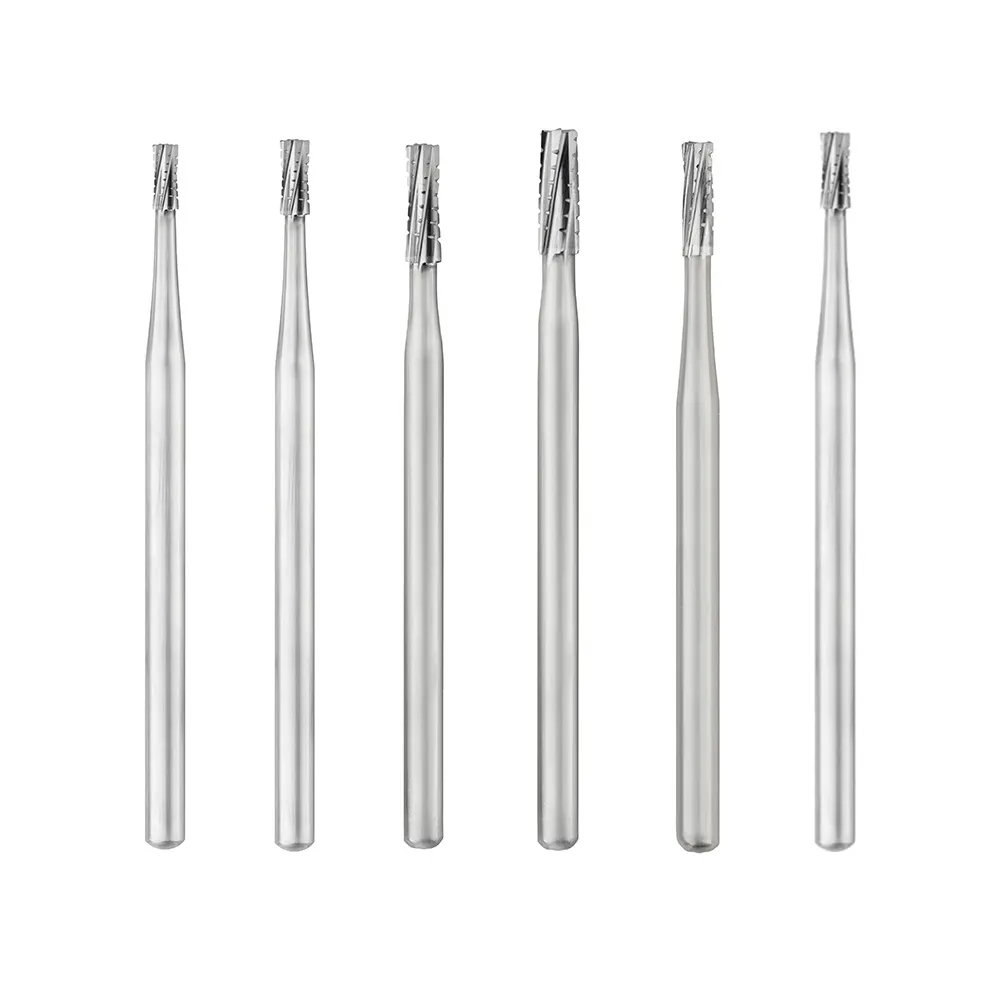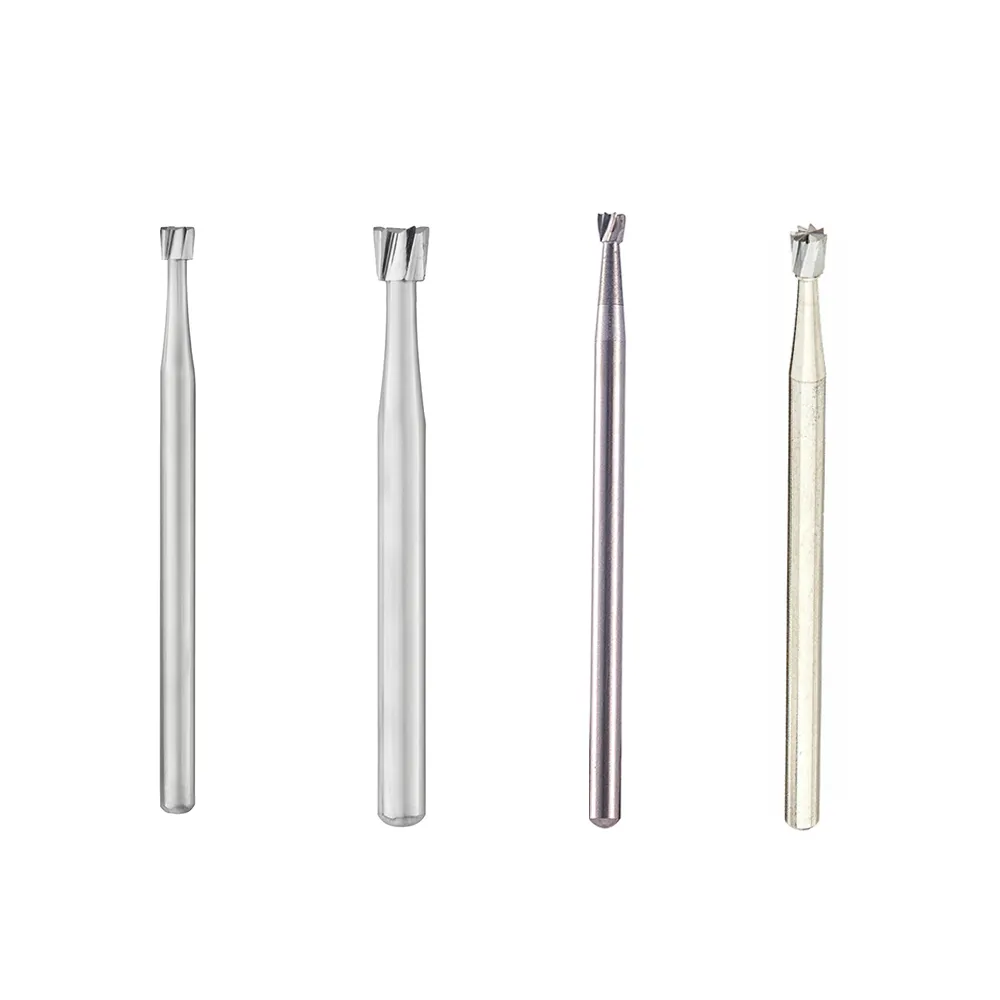Surgical Burs Category - Precision Tools for Dental Excellence
Welcome to Dentalkart's Surgical Burs category, a specialized haven meticulously designed to meet the discerning needs of dental professionals engaged in oral surgery. Within this realm, you'll uncover an extensive collection of indispensable surgical burs that redefine precision and elevate your dental procedures.
Discover the Art of Dental Surgical Burs
Dental surgical burs are the heartbeat of precision in oral surgery. These remarkable tools are specifically crafted to meet the demands of intricate dental procedures, facilitating accurate bone and tissue removal. By employing advanced materials and cutting-edge design, surgical burs have become indispensable instruments in enhancing the efficiency and outcomes of dental surgery.
Within the Surgical Burs category, you'll delve into a tapestry of distinct bur types, each tailored to serve precise purposes. From diamond burs for efficient enamel shaping to carbide burs for bone contouring, each type caters to the nuances of diverse dental procedures. Whether you're sculpting, smoothing, or shaping, our burs provide unmatched precision and efficiency.
- Diamond Burs: Ideal for enameloplasty and creating intricate details.
- Carbide Burs: Perfect for efficient bone removal and contouring.
- Tungsten Carbide Burs: Designed for precise cutting and shaping of materials like porcelain and metal.
- Surgical-Length Burs: Extended length for better access in oral surgery.
- Finishing Burs: Crafted to achieve smooth surfaces and polished results.
- Specialty Burs: Engineered for unique applications, catering to specialized procedures.
These burs boast cutting-edge features like durability, optimal rotational speed compatibility, and effective debris evacuation. They are tailored to reduce heat generation and minimize tissue trauma, ensuring patient comfort and excellent surgical outcomes.
Dentalkart proudly presents an expansive range of dental surgical burs from esteemed brands like Prima Dental, SS White, Microdont, Hudens Bio, TriHawk, and more. With a commitment to quality and innovation, our carefully curated collection ensures that you have access to the finest instruments for your surgical endeavors. Experience the convenience of sourcing a comprehensive range of burs in one place. Dentalkart's Surgical Burs category is your gateway to precision, efficiency, and dental excellence. As your trusted partner, we provide the tools you need to elevate your practice and redefine the art of dentistry.
Q: What type of handpiece is used in oral surgery?
A: In oral surgery, different types of handpieces are used to accommodate various procedures and tasks. Here are the different types of handpieces commonly used in oral surgery:
- High-Speed Air-Driven Handpiece: This type of handpiece operates at high rotational speeds and is used for cutting through hard tissues like bone and enamel. It's commonly employed for procedures like tooth extractions and bone contouring.
- Low-Speed Handpiece (Straight Handpiece): This handpiece operates at lower speeds and is often used for tasks that require precision and control, such as polishing, finishing, and intraoral procedures where higher torque is not required.
- Contra-Angle Handpiece: This handpiece is designed at an angle to the bur, providing better access to hard-to-reach areas, especially in the posterior regions of the mouth. It's used for tasks like cavity preparation, root canal treatments, and other intricate procedures.
- Surgical Handpiece: A specialized high-speed handpiece designed specifically for oral surgery. It has a more robust build, higher torque, and better cooling systems for efficient bone cutting and other surgical tasks.
- Implant Handpiece: Implant handpieces are designed for procedures related to dental implant placement. They are equipped with special features to facilitate precise drilling and positioning of dental implants.
- Piezoelectric Handpiece: This handpiece utilizes ultrasonic vibrations to perform delicate bone surgeries, such as ridge splitting, sinus lifts, and bone grafting. It offers more controlled cutting and minimal tissue damage.
- Electrosurgical Handpiece: This type of handpiece uses electrical currents to cut and coagulate tissues during oral surgery. It's often used for procedures that require controlled tissue incisions and hemostasis.
- Laser Handpiece: In laser-assisted oral surgery, specific handpieces are used to deliver laser energy for cutting, vaporization, and tissue interaction. Lasers are used in various procedures like soft tissue surgeries and periodontal treatments.
Q: What tools are used in oral surgery?
A: Oral surgery involves a variety of tools and instruments designed to perform surgical procedures within the oral cavity. Here are some of the tools commonly used in oral surgery:
- Surgical Handpiece: A surgical handpiece is a high-speed, powerful tool used for cutting and shaping hard tissues like bone during procedures such as tooth extractions, bone grafting, and implant placement.
- Surgical Burs: Surgical burs are attachments for the handpiece, available in different shapes and sizes. They are used for cutting, drilling, and shaping bone and teeth during oral surgery.
- Scalpel: A surgical knife used for making incisions in soft tissues. Scalpels come with various blade sizes and shapes to suit different surgical needs.
- Forceps: Dental forceps are used to grasp, manipulate, and extract teeth during extractions. There are different forceps designs for specific teeth and extraction techniques.
- Elevators: Elevators are used to loosen teeth from the surrounding bone before extraction. They help lift and separate the tooth from its socket.
- Bone Chisels and Mallets: These tools are used for bone surgeries, such as osteotomies and ridge-splitting. Chisels help shape and contour bone, while mallets provide controlled force.
- Rongeurs: Rongeurs are used to trim and shape bone edges. They come in various sizes and designs for different surgical tasks.
- Retractors: Oral surgery retractors help hold tissues away from the surgical site, providing a clear view and access to the area being operated on.
- Sutures and Needles: Sutures are used to close incisions after surgery, while needles are used to pass the suture through tissues. Various suture materials and needle types are available to suit different needs.
- Hemostatic Agents: These agents help control bleeding during surgery. They can be applied to the surgical site to promote clotting.
- Surgical Curettes: Curettes are used for tissue debridement and cleaning. They come in different shapes and sizes for different procedures.
- Surgical Drills: Used for precise drilling during procedures like implant placement, surgical drills come in various sizes and designs for different bone densities.
- Surgical Suction: Suction devices help clear the surgical area of blood and debris, maintaining a clear field of view for the surgeon.
- Laser and Electrosurgical Devices: These tools utilize laser or electrical energy for cutting and tissue modification during oral surgery.
- Piezoelectric Devices: Piezoelectric tools use ultrasonic vibrations for precise cutting of bone without damaging adjacent soft tissues.
- Implant Instruments: Specific tools are designed for dental implant placement, including osteotomes, implant drivers, and torque wrenches.
- Biopsy Instruments: These instruments are used for tissue sample collection during biopsies for diagnostic purposes.
Q: What are surgical burs, and how do they vary in function?
A: Surgical burs are attachments for the handpiece, designed for cutting and shaping bone and teeth. They come in various shapes and sizes to suit different procedures, such as bone contouring, tooth extraction, and implant site preparation.
Variations in Surgical Burs and Their Functions:
- Round Burs: These burs have a cylindrical shape and are used for initial bone or tooth removal. They create rounded cavities and are often employed in tooth extraction and bone contouring.
- Pear Burs: Characterized by a tapered head, pear burs are versatile tools. They are ideal for creating undercuts, beveling bone edges, and refining surgical sites.
- Round End Taper Burs: These burs combine a round head with a tapered profile. They are useful for creating grooves, undercutting, and enhancing the precision of bone cutting.
- Inverted Cone Burs: With a conical shape that narrows towards the tip, these burs are effective for controlled tissue removal in tight spaces and creating concave surfaces.
- Straight Fissure Burs: These burs have straight blades and are commonly used for initial tooth separation during extractions and for creating straight-line access to bone.
- Lindemann Burs: Featuring a cylindrical shape with rounded ends, Lindemann burs are often used for alveoloplasty, a procedure to reshape the bone after tooth extraction.
- Diamond Burs: These burs have diamond-coated tips and are versatile for both soft and hard tissue procedures. They are used for enameloplasty, cavity preparation, and bone contouring.
- Surgical-Length Burs: These burs are longer than standard burs, designed to access deep surgical sites. They are commonly used in procedures requiring extended reach.
Q: Are there specialized tools for procedures like bone grafting and sinus lifts?
A: Yes, bone grafting and sinus lift procedures require specialized tools such as bone chisels, mallets, and sinus lift kits. These tools aid in precise bone manipulation and graft placement.
Q: How do lasers and electrosurgical devices enhance oral surgery procedures?
A: Lasers and electrosurgical devices utilize energy to cut and modify tissues. They offer precision and hemostasis during soft tissue surgeries, reducing bleeding and post-operative discomfort.
Q: Are there specialized burs for orthognathic surgery procedures?
A: Yes, orthognathic surgery often requires burs designed for reshaping the jawbone. These burs aid in precise bone reduction and contouring to achieve proper facial harmony.
Q: Explain the benefits of using laser-cut surgical burs in comparison to traditional burs?
A: Laser-cut burs offer superior precision due to their precise manufacturing process. They reduce vibration, minimize heat generation, and provide smoother cutting, enhancing surgical outcomes.
















